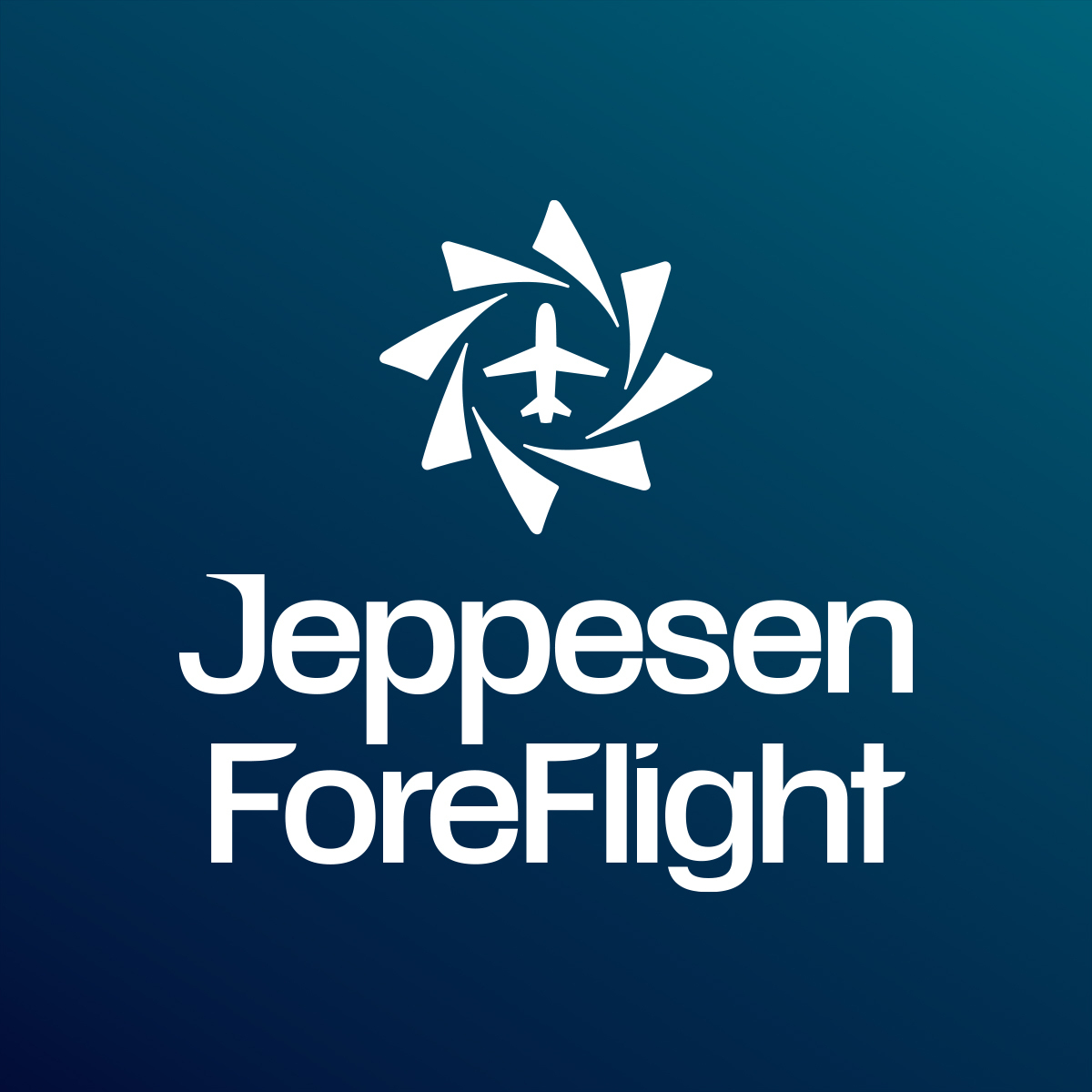Future of the Aviation Industry: Mastering Global Mission Planning in an Era of Disruption

How should business aviation operations departments navigate flight planning challenges in these times of geopolitical uncertainty and rapid technological changes?
Regional conflicts and government sanctions create restrictions on flight operations. Issues such as cybersecurity threats and the environmental repercussions of air travel add more complexity. So, as post-pandemic air travel continues to increase, ensuring safe, efficient flight operations in this changing, and challenging, environment is paramount.
It’s a landscape that requires a holistic approach, rigorous planning and proactive risk management. However, with technological advances and an integrated strategy, the business aviation sector can plan for global missions effectively, despite the challenges.
7 challenges facing the aviation industry that affect international mission planning
1. Geopolitical conflicts
Geopolitical conflicts can arise, or worsen, at any time, posing significant challenges to flight operations. Unsafe airspace, such as the areas around Israel, Gaza, Ukraine and Russia, means traffic flow is routed around these areas. This increases track miles and therefore fuel burn and cost, and CO2 emissions. It also concentrates traffic into potential bottlenecks, for example in northern Turkish airspace, skirting the southern Black Sea.
There are also, less publicized, regional conflicts to be aware of. The Geneva Academy states there are over 45 armed conflicts currently ongoing in the Middle East and Africa, including Mali, South Sudan, Sudan, and Yemen. These create a significant risk of ground fire and surface-to-air missiles.
In 2014, scheduled passenger airline flight Malaysian MH17 was on a flight-planned route, in two-way communication with ATC at FL330, when it was shot down over Eastern Ukraine. A tragic event that serves as a stark reminder of the risks involved.
2. Sustainability regulations
In 2021, the International Air Transport Association (IATA) passed a resolution committing member airlines to achieving net-zero carbon emissions from their operations by 2050. This pledge brings air transport in line with supporting efforts of the Paris Agreement's temperature goal.

Subsequent initiatives led by organizations like the European Business Aviation Association (EBAA) are establishing sustainability standards through which the business aviation industry can “measure the environmental and social sustainability of aircraft operations and the ecosystem that supports flights.” (AIN)
According to recent data from the US Environmental Protection Agency’s (EPA) latest annual inventory of greenhouse gas emissions, US business jet and turboprop CO2 emissions are down 62% since 2005, and emissions fell 38% between 2019 and 2022, despite a 23% increase in flight hours. This is largely due to more fuel-efficient engines.
Meeting sustainability targets will continue to be an important focus of the aviation industry. With ongoing development and increased use of Sustainable Aviation Fuel (SAF), electric and hybrid aircraft, and more efficient aircraft designs, there will be an increasing emphasis on reducing the environmental impact of aviation in the next few years.
3. Sanctioned countries
The imposition of sanctions on a country usually leads to reciprocal measures that affect flights to and from that country. For example, most western nations and some other states have banned flights by Russian air operators.
As a result, Russia banned flights from those countries from entering Russian airspace, affecting services to Russian destinations as well as overflights, and creating the associated challenges of increased fuel burn, time and costs.
In addition, even if granted permission to fly into the sanctioned country, business jet operators also face safety and operational challenges due to limitations in accessing aircraft and engine manufacturers' spares and support services in Russia.
4. ATC labor issues and work stoppages
Labor disputes (or ‘strikes’) can disrupt air transport significantly. Particularly in Europe. According to Eurocontrol, there were 34 days with labor disputes impacting air transport in Europe between March 1 and April 9, 2023. Those strike days affected approximately 237,000 flights and 10 million passengers. On a typical strike day during that period around 64,000 passengers were unable to fly as intended due to cancellations.
The most frequent kind of work stoppages affecting the industry are those by Air Traffic Controllers (ATC), particularly in France. These labor disputes affect not only France, but much of Europe. This is due to the large numbers of flights normally routed through France having to be diverted around or delayed, or canceled. When French ATC strike, airways around the country become a bottleneck, affecting other nearby countries such as Belgium, Germany and Switzerland.
Labor disputes by other industry workers, such as ground crew or baggage handlers, can also occur occasionally, which results in corresponding delays and disruptions to airport services.
As ICAO forecasts an increase in air traffic in the future, any future strikes, particularly by air traffic controllers, will become even more disruptive.
Labor issues and the resulting disruptions affect non-scheduled flights, such as business jet flights, just as much as scheduled services. Navigating them requires contingency planning and coordination with airports and relevant authorities to minimize the impact on international flight planning.
5. Climate Change
Climate change is a significant challenge for the future of aviation, bringing about more frequent and severe weather events globally, as seen with the unprecedented flooding experienced in Dubai in April 2024, and the scorching temperatures in Sahel and West Africa.
These weather events cause issues for operators and pilots. Restrictive runway performance will cause limits to take-off weights, additional ground handling support such as pre-conditioned air may be needed, and supplementary hot weather procedures for pilots and engineers may be required.
6. Satellite Navigation Interference
.avif)
Global Navigation Satellite System (GNSS) is the generic term for what many refer to as GPS. GPS is the primary navigation aid for all modern aircraft. GPS defined waypoints allow for more creative design of instrument procedures that are not dependent on conventional ground-based navigation aids. These types of standard instrument departures (SIDs), arrivals (STARs) and approaches are important to airspace modernization, facilitating more efficient use of airspace. GPS also allows published instrument approaches to runways not otherwise serviced by conventional radio navigation aids and approach design allowing lower-noise routes.
These types of approaches will be an important part of the future of aviation, but GPS interference near conflict areas is an increasingly common threat to operations:
- GPS jamming is the blocking of a GPS signal so pilots cannot fly routes or procedures that require a high level of navigation accuracy only GPS can provide.
- GPS spoofing occurs when an aircraft receives an erroneous GPS signal. It's not normally a problem for navigation as multiple navigation systems cross-reference each other to check for erroneous data. Other important systems can be affected though, for example, on-board terrain alerting can be fooled into generating false alerts.
As a result, conventional ILS approaches will continue to be the most accurate approach aid for the foreseeable future.
7. Forecast Growth in Air Travel
As the demand for air travel continues to grow, future challenges within the aviation industry will intensify. With forecasts projecting a substantial increase in air travel by 2030, from over 500,000 to 800,000+ flights per year in North Atlantic Airspace alone, the need for proactive measures becomes increasingly evident.
Efforts to modernize airspace and optimize flight planning will continue. By making the best use of sustainable aviation fuel (SAF) and leveraging advancements in technology, such as performance-based communications and surveillance (PBCS), more aircraft will be able to get their optimal routes at optimal speeds, helping to reduce flight times and CO2 emissions.
Best practices for successful international flight planning in a constantly evolving environment
In an aviation landscape that includes geopolitical tensions, environmental challenges, and frequent technological advancements, successful international flight planning requires adaptability and foresight. Flight planners must be diligent in navigating these complexities effectively.
Continuously Monitor Geopolitical Situations
Flight departments need to stay abreast of conflict areas, especially for ad-hoc flights to unfamiliar destinations. Proactive monitoring is required to optimize routing and ensure compliance with regulatory requirements.
It’s important to remember that venturing into new territories may require specific knowledge about local procedures. This is the case, whether or not it's a conflict area. For example, pilots flying into China for the first time need to be well briefed on metric flight levels.
Develop Contingency Plans and Alternative Routing Options to Mitigate Risk
Flight departments are required to create comprehensive contingency plans and alternative routing options for international flights.
Using advanced platforms like ForeFlight enables seamless adaptation to dynamic and potentially complicated situations, making international flight planning processes more robust and straightforward, particularly when there are multiple sectors to plan for.
Establish Communication Channels with Air Navigation Service Providers and Regulatory Bodies
Using the current aeronautical data from air navigation service providers (ANSPs) and regulatory bodies is essential for international mission planning.
Flight planners must be using the currently effective aeronautical data and aircraft flight computers must contain the currently effective aeronautical data. Pilots must also have access to charts that are effective on the date of flight.
To ensure flights are planned and operated using the correct data, operators must have robust mechanisms in place to routinely update aeronautical information in accordance with the regulated update cycle.
Flight planners must proactively check Flight Information Region (FIR) Notices to Air Missions (NOTAMs), for awareness of any airspace restrictions, sanctions or operational changes that may affect their planned routes.
Knowing the national entry requirements for the nationality of each passenger on board is also essential to ensure compliance with immigration and customs regulations.
Employ Advanced Flight Planning Tools and Software for Efficient Route Optimization
With so much to consider when planning an international mission, using advanced flight planning software can simplify much of the process.
ForeFlight flight planning software streamlines the route optimization process, calculating optimal flight paths that take account of any restrictions, minimize fuel consumption, and mitigate operational risks. Thus ensuring safer, more efficient international flight operations.

Ensure Crews are Knowledgeable About Airspace Restrictions, Sanctions, and Safety Protocols
Flight crews must always have relevant, concise, and threat-based briefing material regarding airspace restrictions, sanctions, and safety protocols.
Flight planners, therefore, need to deliver comprehensive information specific to the company's operations and address the unique challenges and requirements of each flight and destination.
No matter what the future brings, ForeFlight can help
ForeFlight offers a comprehensive suite of solutions tailored to the needs of international and domestic flight planning. For complex missions, ForeFlight offers Trip Support to help operators tackle complicated planning with ease. Trip Support leverages the expertise of the highly experienced Jeppesen ITPS team.
With ForeFlight Trip Support operators can:
- Get optimal routings and airspace compliance
- Route to avoid specific waypoints or even entire Flight Information Regions
- Manage entry requirements, even when changeable (eg during Covid)
- Organize relevant permits and overflight permissions
- Adapt to last-minute changes, such as labor disputes or flow restrictions
- Secure competitive fuel prices even in unfamiliar locations
With 24/7 services provided year-round, ForeFlight Trip Support is well-suited for international missions across various time zones.
Using ForeFlight Trip Support international flight planners have access to a complete solution, with efficient decision-making and minimized disruptions, to ensure passengers reach their destinations safely and on time.






